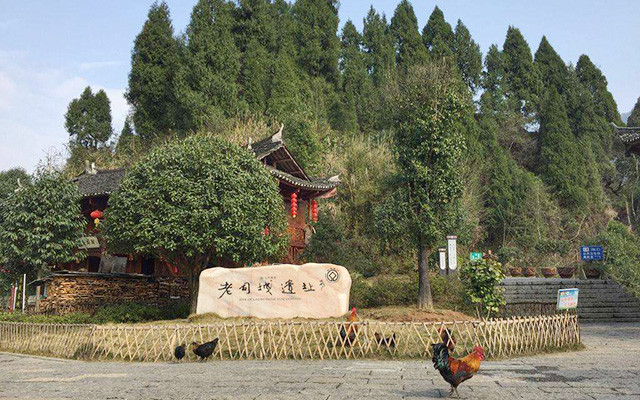Laosi City, an eternal legend of a dynasty
I saw ancient stone buildings embedded in the lush peaks of the Andes, with castles eroded by wind and rain for hundreds of years rushing down... In China, 30 years earlier than Machu Picchu of the ancient Inca Empire, there is an ancient city of tusi. On the seventh day of the Journey of Guarding Art in China, we arrived in Yongshun, Xiangxi, to explore this ancient and weathered imperial ruins.

Setting up the stage, singing the play, and ending the scene, in the deep mountains of Xiangxi, Hunan, a grand performance by a chieftain was performed from the Five Dynasties to the Qing Dynasty, and lasted for more than 800 years. 35 chieftains appeared one by one, belonging to the same family and surname, either fond of military affairs, enjoying the scenery, or just a sad terminator; A mountain city, from its rise to prosperity, then from prosperity to desolation, and finally lost to history beneath the soil, then reincarnated into the initially closed and barren mountain village.

Tusi, many people know that Alai told their story in 'Dust Settles'. After more than 20 years of archaeological excavations, a Tusi City site - Laosi City - has emerged underground in Yongshun. It is no longer a legend, but a reality. Starting from Yongshun County under the jurisdiction of Xiangxi Tujia and Miao Autonomous Prefecture to the east, the mountains are stacked and the streams and waterfalls are flowing. Looking around, the mountain peaks stand proudly like horses holding their heads high - that is the legendary 'Ten Thousand Horses Returning to the Court'. The concept of Feng Shui is always unreliable, but if the place of return has enough historical and cultural heritage to amaze "ten thousand horses", it is not impossible.

When Lao Sicheng appeared in front of us, it was separated by the Lingxi River. From a distance, it only occupies one slope from the foot of Fenghuang Mountain to the mountainside. After archaeological excavation, vegetation and houses have disappeared, presenting various contours that you can imagine, such as terraced fields.

Expanding my horizons, I discovered that Laosi City had chosen a good place nestled by mountains and waters. The green mountains are surrounded by clear waters, and the city is embedded within them. The green mountains are like a frozen phoenix, ready to fly and fall; That clear water is the graceful jade belt flowing from Northeast China, with unique peaks and exquisite stones on both sides, verdant ancient trees, shimmering waves and mountain shadows, clear and visible.

A medieval mountain city, artificially built city walls, palaces of chieftains and nobles, government offices for handling government affairs, squares, streets, ancestral halls, religious worship sites, as well as steles, memorials, epitaphs, and stone inscriptions that record family history... The splendor of the Guangdian and Shengong palaces, the lingering dreams of life and death, the choices of national survival... overlap among these relics

Standing on the city wall of Daximen, gazing at the vicissitudes of Laosi City, imagining or reminiscing about the "resurrected" old scenery with calm emotions, I feel that reality's acceptance of history always comes too late.
Previous Article:World all-around champion of karst caves - Huanglong Cave
Next Article:Sitting Dragon Gorge: Mysterious Xiangxi, a legend of the earth
